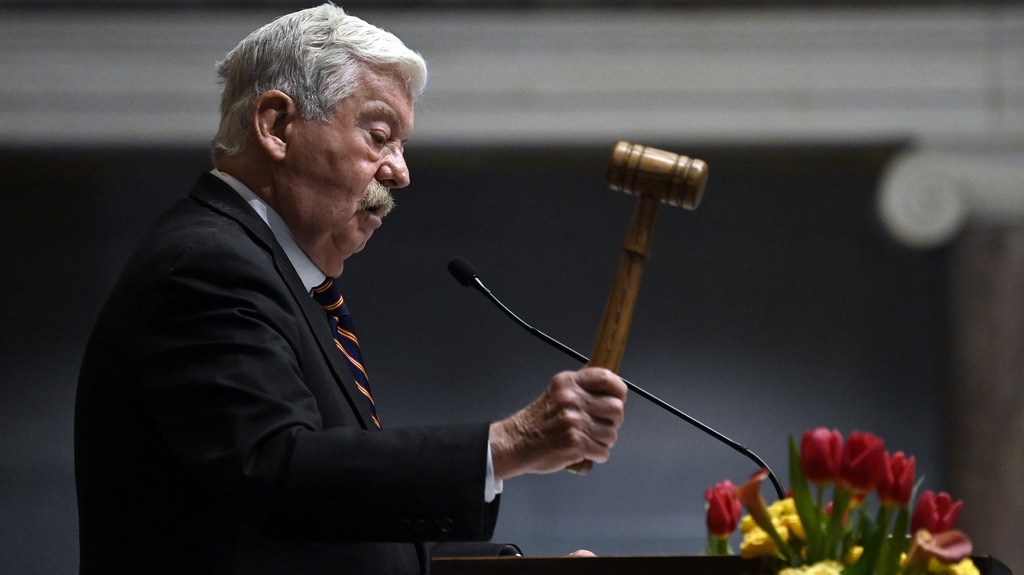July 7, 2011
Analyst: Marriage Equality May Soon Trump Anti-Gay Amendments
Kilian Melloy READ TIME: 5 MIN.
An analyst writing for the New York Times had a look at what would happen if anti-gay ballot initiatives to amend the constitutions of all 50 states and deny marriage to gay and lesbian families were placed before voters today. The results predict that the social acceptance GLBTs have gained in recent years would translate into the political sphere as well.
Nate Silver took a host of variables into account, and needed to break his results into four different scenarios in order to offer a comprehensive analysis. In one scenario, Silver assumed a slow but steady growth in America's acceptance of gay and lesbian families, and also assumed that a ballot initiative would ban marriage for such families, but not civil unions. In another, he assumed the same slow but steady progress, but assumed that voters would be weighing in on amendments that would bar marriage and civil unions alike.
The other two scenarios reflected an accelerated rate of acceptance for gays and their families, and examined the prospects of, respectively, a measure designed to deny marriage to same-sex families, and a measure that would put both marriage and civil unions out of the reach of same-sex couples.
"The data for both models consist of the results of 34 ballot initiatives to limit same-sex marriage rights, all but one of which, Arizona Proposition 107, were approved," Silver explained. "I do not use the two cases -- in Colorado in 2006 and in Washington in 2009 -- in which measures were on the ballot to expand rights for gay and lesbian couples in the form of domestic partnership laws," he added parenthetically.
"The model does not use any polling data, other than to calibrate the time trend in the Accelerated Model," Silver added.
In every case but one, when the rights of gay and lesbian families have been put to a popular vote, the results have punished those families. The exception, a ballot question put to voters in Arizona, only lost because unmarried heterosexual couples might have been affected; a subsequent voter initiative clearly targeting only gay and lesbian families passed. But Silver noted that initiatives banning both marriage and civil unions did not pass as decisively as measures banning only marriage rights for gays.
The scenario that saw the most anti-gay referenda passed by voters -- 36 of the 50 states -- assumed that acceptance of gays and their families has increased along slow but steady lines, and that the ballot initiatives all banned marriage only.
The reality on the ground, however, is that acceptance of gays and their families has spiked sharply in recent years, and new polling data show that for the first time a slender majority of Americans favors marriage equality.
That being the case, if voters in all 50 states went to the polls in 2012 to vote on constitutional amendments designed to deny gays marriage and civil rights both, a mere 15 states would see such measures approved, Silver's analysis indicated.
Such numbers might give heart to equality advocates who hope to see voters in Minnesota reject an anti-gay amendment there next year. Moreover, equality advocates are considering letting the people vote on marriage in Maine, where voters repealed a marriage equality law in 2009, and Oregon, where voters approved an anti-gay amendment in 2004.
Silver's earlier version of the models he used, created in 2009, were meant to examine the chances of that Maine vote. The analysis predicted that the measure would lose. Though the anti-gay measure succeeded, the margin was thin -- so thin that it fell within the model's margin of error, Silver noted.
"The most basic conclusion is simply that a lot of states should be considered 'swing states' on the question of same-sex marriage right now," Silver wrote, going on to predict that the measure in Minnesota will fail, but that it will be extremely close. That prediction took into account the so-called "Bradley effect," the tendency of anti-gay voters to answer pollsters one way but then support discriminatory measures from the privacy of the ballot box. Currently, polls show 55% of Minnesotans oppose the amendment -- a greater margin than typically answers polls one way but votes the other.
In Iowa, where anti-gay conservatives successfully spearheaded a push to oust three state supreme court justices after the court unanimously struck down an anti-gay law as unconstitutional, a ballot initiative would pass if put to voters next year. But, Silver added, it will be years, if ever, before such an amendment actually does make it onto the ballots, and by then it is likely that opposition to marriage equality will have dwindled considerably, in large part because by that point voters will have seen that disaster did not befall Western Civilization due to gays marrying.
As for California, where an unprecedentedly expensive and divisive campaign barely resulted in the rescinding of existing marriage rights in 2008, a second ballot initiative geared at repealing Proposition 8 could succeed, though Silver noted that there was no way of knowing how voters would be affected by having to face the issue on a ballot once again. Silver came to similar conclusions about Oregon and Maine.
As for New Hampshire, where anti-gay groups like the National Organization for Marriage are working to yank existing marriage rights from gay and lesbian families a la Prop. 8, Silver's models predicted a sound rejection by voters of any amendment seeking to curtail marriage rights.
"In short, the future for same-sex marriage looks to be reasonably bright," Silver concluded. "[T]he six states that have gender-neutral marriage laws on the books now are unlikely to see them reversed, while some of those that don't are in a position for gay rights advocates to go on offense."
The hard-fought, hugely expensive, and immensely stressful tactic of waging the marriage fight state by state might, of course, no longer be necessary one day. If the United States Supreme Court were to hear the appeal on the verdict a federal judge handed down against Prop. 8 last year, voters -- and even avidly anti-gay groups such as NOM -- might be reluctant to see effort and money wasted on similar ballot initiatives to pass anti-gay amendments, while existing anti-gay amendments might suddenly be more vulnerable to legal challenge on Constitutional grounds.
Similarly, if the Defense of Marriage Act, and anti-gay federal law from 1996 that denies gay families any federal recognition or protection, is struck down in the courts -- and one federal court has already found part of DOMA to be unconstitutional -- then a federal law granting marriage equality, or at least civil unions, could invalidate some or all of the anti-gay amendments passed on a state-by-state basis.
Until then, however, the struggle for full family parity will remain restricted to the state-level trenches, with massive sums of money and tremendous amounts of time going into efforts to deny gay and lesbian families -- or, on the other side, to secure their equal rights.
Kilian Melloy serves as EDGE Media Network's Associate Arts Editor and Staff Contributor. His professional memberships include the National Lesbian & Gay Journalists Association, the Boston Online Film Critics Association, The Gay and Lesbian Entertainment Critics Association, and the Boston Theater Critics Association's Elliot Norton Awards Committee.


